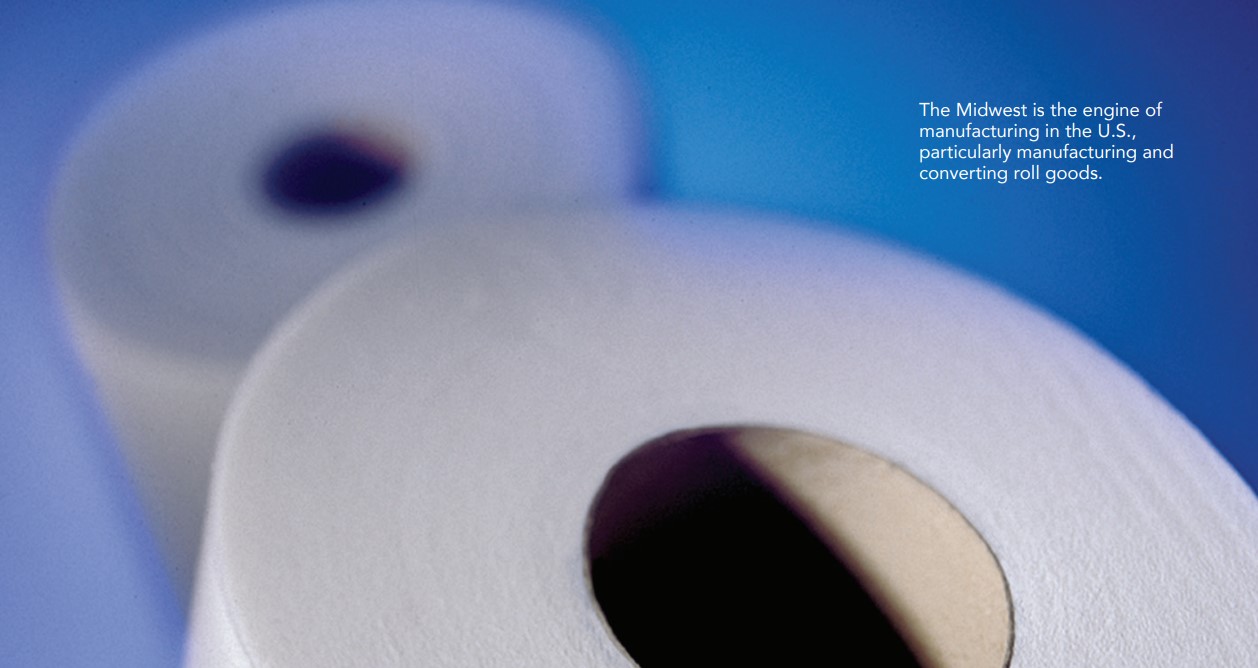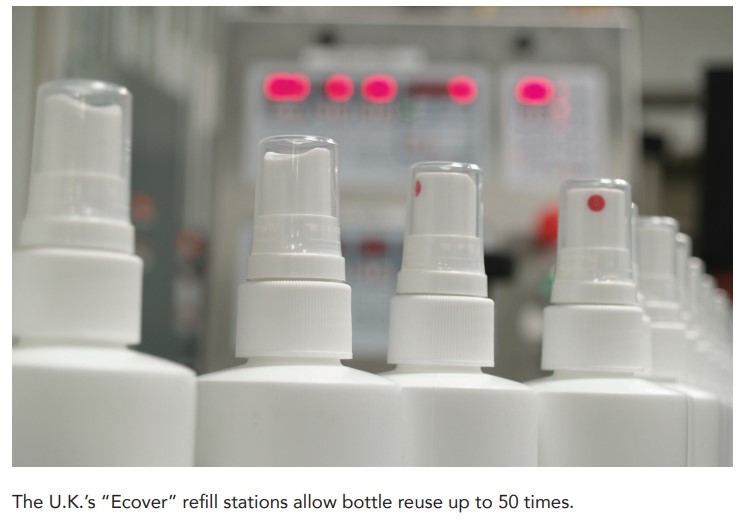Rust to Tech: Part 5
- Published: January 02, 2023
By Susan Stansbury, Industry Consultant
This is Part 5 of our series: Rust to Tech. While we know that converting and associated industries have made a leap from the old rust belt days into a world of technology and advancement, we need to consider how further innovation, even disruptive technologies, can propel — and challenge — new outcomes.

What are disruptive technologies?
One way to define the world of disruptive technology is to look at solutions that move beyond established technologies, ranging from significant displacement of current approaches and even creating entirely new advancements. Harvard Professor Clayton M. Christensen has also noted that disruptive technologies transform the competitive landscape. What are factors affecting manufacturing?
- Robotics, automation and machine learning
- Smart technologies and digital recording
- Big data, algorithms and cloud computing
- Intelligent monitoring and sensors
- Material innovations, renewables and sustainability
- Energy storage, recovery and efficiency
- The “internet of things” merge data streams.
Examples and expansion of these items follow. But first, a comment from Kevin M. Lee, Director of Solutions Engineering and SafetyChain Software, providing a view of the interconnectivity of all:
“Manufacturing plants generate volumes of productivity, environmental and safety data daily. Harvesting and marrying machine collected data with human collected data empowers operators, supervisors and executives to visualize abnormalities and trends in real time. Real time data capture combined with immediate visualization allows plant management to action the data for production improvements.”
It’s the use of the above factors that results in improvements and disruptive changes described by Kevin Lee.

Robotics and Automation
The latest robotics offer higher levels of precision and hygienic standards. When combined with automated production lines, results are transformative. Looking specifically at the converting industry where slitting-winding and related operations are common, Bryan Reilly, Technologies Sales Manager, brings home concrete examples:
“The questions I’ve received from my customers over the past couple of years center on what automation options exist for the slitter/rewinder and what downstream automation is available. On the slitter/rewinder, options can include automatic knife positioning (AKP), laser core positioning, automatic core loading and positioning, automatic cross-cut of finished rolls, automatic tape-to-tail, automatic tape-to-core, automatic finished roll extraction (pushers) and choice of Left-hand or Right-hand drive. Currently, only a handful offer Left-hand or Right-hand options, but demand is increasing for machines that can be ‘mirrored.’
“Once finished rolls are pushed off the rewind shafts and onto the unload ‘tree’ – what additional automation can be used to improve quality and throughput of finished rolls? Some manufacturers either offer or partner with automation integrators to include robotic removal of rolls from the ‘tree’ and 90° rotation so that rolls are eye-to-the-sky then placed on a conveyor.”
Reilly adds: “Next, there’s the option for automatic core labeling and outer wrap label placement along with edge/profile inspection. Yet further sophistication can even incorporate automatic bagging and palletizing. A few larger converters are already at this stage of utmost automation while others are trying to focus on what level of automation they want to achieve and at what costs in the next few years. One thing is for sure, if the automation provides enhanced safety, reduced roll damage, increased throughput and higher quality finished rolls – it’s only a matter of time before everyone will want higher levels of automation.”
Smart technologies and digital recording, along with cloud computing, big data and other aspects of advancements all overlap and work together for the best efficiencies. Just looking at the stock market, CNBC Correspondent Bob Pisani notes that the market floor had some 4,000 traders when he began there, and now it’s down to some 200 traders. This type of worker shrinkage has occurred almost everywhere. With manufacturing still looking for workers for well-paying jobs, technology is filling the gap with smart shop floor input.
Further regarding industry employment, according to David Manney (Manney’s Manufacturing Minute):
“Even though these technologies can ease some of the stress of working in a factory setting, they don’t entirely eliminate the need for workers who understand what is going on in each process and can react if things break down or something doesn’t go as planned. These new processes also allow manufacturers to rethink how they handle every step of production, from raw materials to finished shipping goods. [When] you’re talking about factories where human hands are still the last step in production, [it] means manufacturers need to think about ways to integrate their machines seamlessly into their workflow.”
The Midwest is the engine of manufacturing in the U.S., particularly manufacturing and converting roll goods. Indiana and Wisconsin vie for best areas in terms of the number of workers in manufacturing. In Wisconsin, with an industry labor force of nearly 500,000, the state is heavy on small-to-midsized manufacturers who are not prone to moving their business overseas, but sometimes challenged by lack of big business capital. Interestingly, LinkedIn listed Madison as first of the top 10 in “tech’s most resilient hubs,” where engineering talent is showing growth.
Among the factory floor inputs are sensors that report everything from electric current data, to humidity, pressure, temperature, flow and various defect detections. In paper and printing, visual inspection and sensors report imperfections such as holes and imperfect print. Consider a flexographic 10-color, gearless press run at high speed with cutting-edge features like second pass in-register printing, automatic impression setting, automatic viscosity control and the ability to track performance 24/7.
It’s a world away from the days when samples were taken to the lab to determine many of these factors. Companies who run roll goods had higher challenges in getting in-process samples. You could not stop a high-speed coating process, for example, to check quality every hour or so. It was a challenge when compared with products like pouches, canisters, pads and individual items that could automatically be kicked out of line at a specified point for inspection. Now, it’s all done at smart tech levels.
In the current tech environment if “AI is designing perfect custom knee implants” (Healthcare Packaging) and 3D printing is increasingly making medical “parts,” it’s happening in manufacturing too. “From file to 3D object is also revolutionizing manufacturing,” said GE Additive. At AdvancedTek of Waukesha, Wisconsin, production parts and tooling are major 3D activities.
Consequences of advancements also affect waste. Paper is already the most recycled material, being natural and renewable, with automated processes also reducing waste. And source reduction of waste is superior to trying to recycle, biodegrade or compost after sale. In addition, companies like Stora Enso and GP mills have had drastic reductions in process water usage. Plastics, too, are under major moves to reduce plastic. Manufacturers are finding disruptive avenues throughout their factories.
Materials and containers are changing rapidly. From the U.K.’s “Ecover” refill stations allowing bottle reuse up to 50 times, to sensors that indicate food shelf life — the ability to design new materials and packages is game changing. Who would have imagined, just a few years ago, that one of the older nonwovens web technologies, needlepunch fabrics, would be used in a new Nike Forward apparel line to reduce its carbon footprint.
“The Internet of Things,” sums up a popular view. It is described as technology that allows addition of a device to objects such as electronic and other factory systems to connect and exchange data.
To read the first four in this series, visit:
https://www.pffc-online.com/converting-perspectives/16672-rust-to-tech-part-i
https://pffc-online.com/coatlam/16737-rust-to-tech-part-ii
https://www.pffc-online.com/coatlam/16840-rust-to-tech-part-3
https://www.pffc-online.com/news/17025-rust-to-tech-part-4
About the Author
Susan Stansbury is a converting advocate with extensive experience in the paper, converting, printing and related industries serving in roles including sales and marketing management.




